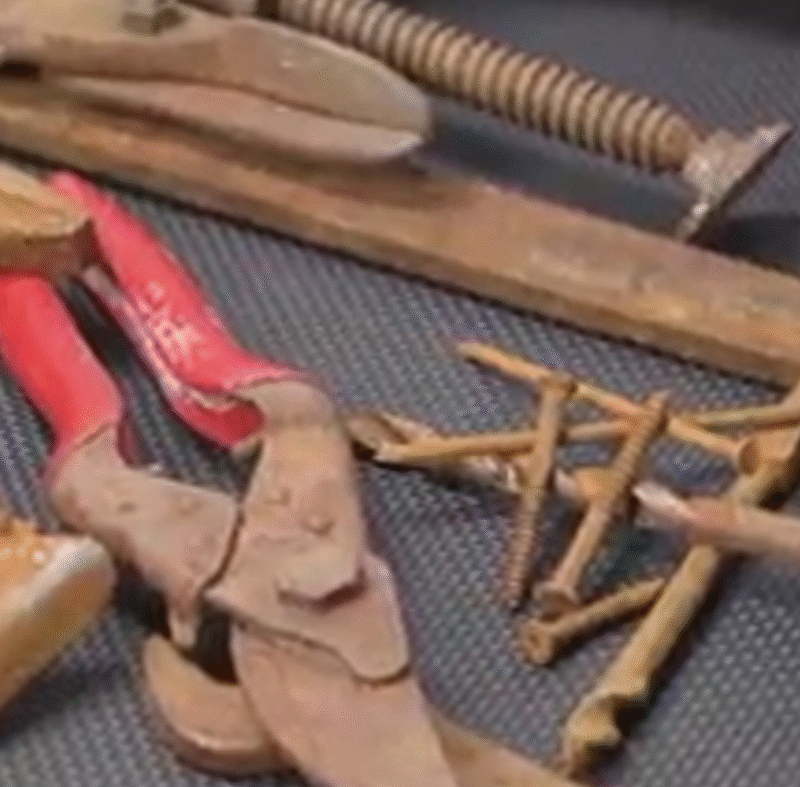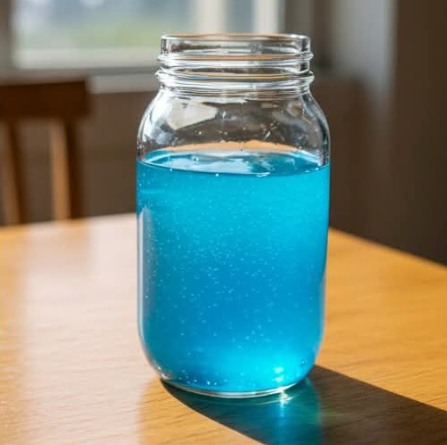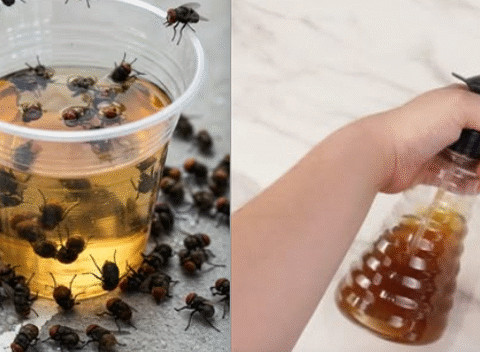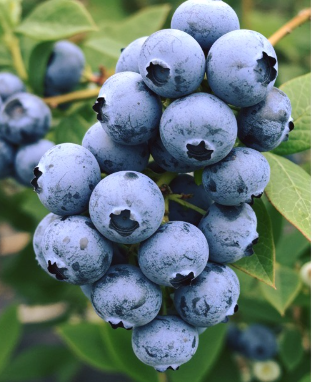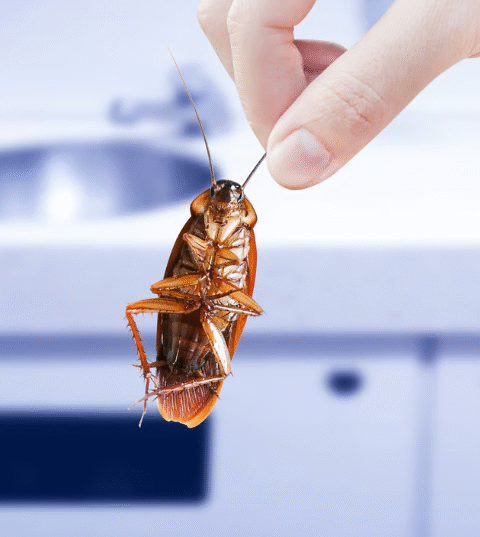🧰 The Best Way to Remove Rust From Tools — No Scrubbing Required! ✨🛠️
Are your favorite tools covered in rust and looking beyond repair? Before you consider tossing them, try this incredibly easy, no-scrub method to bring them back to life. This hands-off trick uses everyday household ingredients to remove rust **safely, naturally, and effectively**—no elbow grease needed!
Whether you’re a DIY enthusiast, mechanic, or casual homeowner, this vinegar-based method is a game-changer for tool maintenance.
—
Why Do Tools Rust? 🌧️
Rust forms when iron or steel reacts with moisture and oxygen—a process called **oxidation**. Tools exposed to humidity, rain, or even just damp garage air are particularly vulnerable.
Common Causes of Tool Rust:
– 💧 Prolonged exposure to moisture
– 🌫️ High humidity storage environments
– 🖐️ Oils and sweat from hands (acidic contact)
– 🧴 Failure to dry or oil tools after use
– 🚫 Poor-quality protective coatings
—
What You’ll Need 🧺
- ✔️ White vinegar (enough to submerge tools)
- ✔️ A container, bucket, or tub
- ✔️ Baking soda (for neutralizing vinegar)
- ✔️ An old toothbrush or rag (optional touch-ups)
- ✔️ Clean towel (for drying)
- ✔️ Lubricating oil (WD-40, 3-in-One, or similar)
No need for wire brushes, power tools, or harsh acids—this method is simple and safe.
—
Step-by-Step Instructions 🔧
1. Place Tools in Container
Choose a non-metallic container (plastic works best) and place your rusty tools inside.
2. Pour in White Vinegar
Fill the container with enough **white vinegar** to fully submerge the tools. The acidic nature of vinegar starts dissolving rust almost immediately.
3. Soak for 12–24 Hours
Let the tools soak **overnight or up to 24 hours** depending on the level of rust. You’ll see brown flakes in the liquid as the rust lifts off.
4. Remove and Rinse
Take the tools out and **rinse them under water**. Most or all of the rust should be gone.
5. Neutralize with Baking Soda
Sprinkle baking soda on the tools and scrub lightly with a toothbrush or rag. This neutralizes the vinegar and halts the acidic reaction.
6. Rinse Again & Dry Thoroughly
Rinse off any remaining residue and **dry completely** with a towel to prevent flash rust.
7. Apply Lubricating Oil
Finish by applying a thin coat of oil to protect the metal from future rust and restore smooth function.
—
Why This Works: The Science Behind It 🧪
Vinegar (Acetic Acid)
Dissolves iron oxide (rust) by reacting with it chemically, lifting it off the tool’s surface without damaging the base metal.
Baking Soda
Acts as a base to neutralize remaining vinegar, stopping any ongoing corrosion.
Oil Coating
Blocks air and moisture from contacting the cleaned metal, **preventing future oxidation**.
—
Expert Insights from Tool Specialists 🧠
Dr. Leila Nour, Chemical Safety Consultant
> “Vinegar is a surprisingly effective rust remover that’s safer than phosphoric or oxalic acid. Just be sure to neutralize and dry the metal afterward to avoid flash rust.”
Prof. Mark Benson, Tool Restoration Expert
> “I’ve restored century-old hand tools using only vinegar, baking soda, and oil. It’s incredibly effective and doesn’t wear down the tool like grinding or sandblasting.”
—
Rust Removal Results: Before vs After 🔍
| Tool Type | Before Cleaning | After Cleaning |
|——————|——————————-|——————————–|
| Pliers | Rusty, frozen joints | Smooth, fully operational |
| Wrench | Heavy rust, orange surface | Bare steel, shiny finish |
| Screwdriver | Dull, brown oxidation | Clean handle, polished shaft |
| Drill Bit | Pitted and rough | Sharper, rust-free surface |
—
Table: Rust Removal Benefits
| Action | Purpose | Result |
|---|---|---|
| Soaking in vinegar | Loosens and dissolves rust | Metal surface cleared of oxidation |
| Baking soda rinse | Stops acidic corrosion from continuing | Neutralized surface ready for protection |
| Drying thoroughly | Prevents flash rust formation | Preserves clean finish |
| Oiling tools | Forms protective barrier | Rust-resistant, long-lasting finish |
—
10 FAQs About Rust Removal with Vinegar ❓
- Can I reuse the vinegar?
No—once it’s loaded with rust particles, its acidity drops and it loses effectiveness. - How long is too long to soak?
24 hours is safe. Prolonged soaking beyond 48 hours may etch the metal. - Will this remove paint too?
Possibly—if paint is loose or poorly adhered, vinegar may lift it along with the rust. - What kind of tools can I use this on?
Steel, iron, and chrome-plated tools. Avoid aluminum and magnesium parts, which may corrode. - Is apple cider vinegar okay?
Technically yes, but white vinegar is stronger and more cost-effective for rust removal. - Can I do this indoors?
Yes, but keep the area ventilated—vinegar has a strong odor. - Does this work on large tools or parts?
Yes—just use a larger container or rotate the tool to soak in sections. - Can I speed up the process?
Gently heating the vinegar can accelerate rust removal, but use caution and never boil it. - How should I dispose of the rust-vinegar mix?
Pour it down the drain with running water unless it’s heavily contaminated with oil or grease—check local disposal guidelines. - What’s the best oil for protecting tools afterward?
Any light machine oil, WD-40, or 3-in-One oil will work. Rub a thin layer all over the metal.
—
Maintenance Tips to Prevent Future Rust 🛡️
1. **Store tools in a dry, well-ventilated space**.
2. **Wipe tools dry after use**, especially after exposure to moisture.
3. **Oil metal surfaces regularly** to create a moisture barrier.
4. **Use silica gel packs or dehumidifiers** in storage cabinets.
5. **Check tools monthly** and catch rust early with light cleaning.
—
Want More DIY Cleaning & Restoration Tips?
Explore these helpful guides to keep your home, workshop, and gear in top shape:
– ✅ [How to Clean a Greasy Range Hood Filter Without Scrubbing](https://www.simplyrecipes.com/how-to-clean-greasy-filter-5199021)
– ✅ [Best DIY Shower Cleaner for Soap Scum & Water Spots](https://www.simplyrecipes.com/diy-shower-cleaner-5271723)
– ✅ [Front Load Washer Deep Clean with Vinegar & Baking Soda](https://www.simplyrecipes.com/how-to-clean-a-front-load-washer-5188883)
—
Final Thoughts: Tools Saved, No Scrubbing Required ✨
Don’t throw out your rusted tools—they just need a little TLC. With this easy, budget-friendly vinegar soak, you can restore even the most neglected screwdrivers, wrenches, and pliers **without scrubbing, sanding, or grinding**.
🧰 Effective
🌿 Eco-friendly
💲 Low cost
🧽 No effort
Try this once and you’ll never waste time or money on commercial rust removers again. Your toolbox will thank you! 🔧
